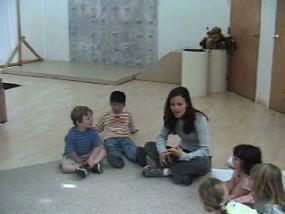Town or City

In this video clip, a group of four-year-olds share with their teacher ideas about what criteria differentiate a town from a city. Some of the children think that a town or city can be determined based upon size (area of land). For example, Molly explains her understanding about the difference between a town and a city by inventing an analogy using the features of the gymnasium. She describes a town as stretching from one side of the rug to the opposite side of the rug (00:19), and comparatively, a city goes “from that side of the gym (points far left), to that side of the gym (points far right)” (00:31). Although from a somewhat different perspective, James shows that he is also thinking about size when he says, “a city is a really big place with lots of skyscrapers way up high…” (01:09). In addition, the children consider distance as they search for criteria to define a city. When the teacher asks Carter how his description of a city is different from a town, Carter says, “It kind-a has to take a long time, right?” (01:00). Later on, James says, “…you would have to get in a motor home to go from a city to a village” (01:53).
Throughout their discussion, notice the children assume that mutually exclusive features such as big or small, differentiate a town and city. Or as James explains, “A town is the, like a bunch of houses are built, and schools are built. And so, a city is not. No houses are built, just skyscrapers. And hotels are built. Working places, um, stores. And they’re all built up.” Consider the challenges young children encounter when working to differentiate a concept (town) from the hierarchy of categories to which it is related (village, town, city, county, state, country), when each class includes many of the same features such as streets, buildings, or places to live and work, etc.
Keywords: Fours, Children-Teacher, Classification, Logic, Geography, Classroom Routines, Cognitive Development
Length of video: 4 minutes, 7 seconds
